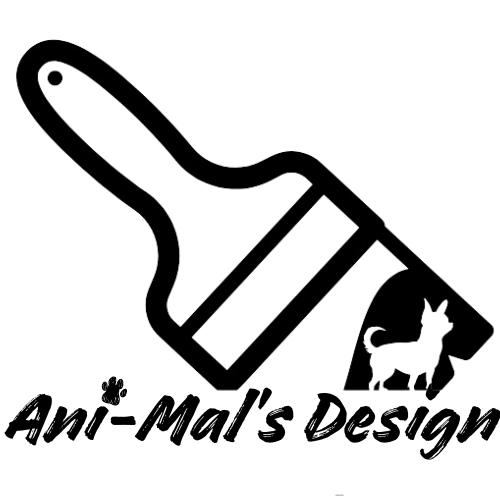Abstract Pet Portraits: Turning Playfulness into Modern Wall Art
Table of Contents
Sometimes what you want to remember isn’t just how your pet looks — it’s how they feel. That’s where abstract pet portraits shine. Instead of recreating every whisker, they translate personality into color, movement, and mood—becoming a feeling on your wall, not only a likeness.
1) When Personality Becomes Shape, Color, and Motion
Abstract art prioritizes feeling over realism. It captures the burst of excitement at the door, the soft calm in your lap, the playful wiggle dance before dinner. Some families choose abstract because it blends beautifully into modern interiors; others choose it for deeply emotional reasons, especially for memorial pieces that celebrate spirit without reopening grief.
In this guide, you’ll see what makes abstract pet art special, how different styles convey different moods, and where it looks best at home—plus simple next steps to begin your own portrait.
2) What Makes an Abstract Pet Portrait “Abstract”?
An abstract portrait doesn’t try to replicate your pet — it tries to interpret them. Instead of exact realism, these pieces lean on:
- Color for emotion (warm, joyful tones vs. calm, cool palettes)
- Shape & line to suggest movement or posture
- Brushstroke/texture to convey personality (soft, energetic, bold, airy)
Where a traditional portrait says, “Here’s what they look like,” an abstract portrait says, “Here’s who they are.” Two people might describe the same piece differently—because abstraction invites interpretation and memory.
Want to meet the people who do this translation? Visit our artist team: Meet the Artists.

3) Why Some Pet Lovers Choose Abstract Over Realism
Not everyone connects most with a portrait that looks like their pet—some connect more with one that feels like them:
- Emotion over detail: recognition lives in energy and softness, not only markings.
- Personal storytelling: goofiness, calm presence, or quiet soulfulness can be center stage.
- Home versatility: abstract blends seamlessly with décor, reading as “art first, story second.”
- Meaningful memorials: a symbolic style can feel healing—less about loss, more about presence.
Not every memory needs a face — some need a feeling.
For framing/display ideas after your piece is finished, see: Framed Pet Portraits: Display Ideas for Your Home. If you’re still deciding between styles overall, visit Choose Your Pet Art Style.
4) Styles of Abstract Pet Art (and How They Feel)
Abstract isn’t “one style”—it’s a whole mood language:
Soft & Dreamy (Pastel / Water-wash)
Cloudlike blends for snuggly personalities—often chosen for memorials. Feels like: warmth, comfort, closeness.
Bold & Expressive (Heavy Brushstrokes / Texture)
Movement and energy for larger-than-life pets. Feels like: joy, spirit, silliness, excitement.
Colorful & Symbolic (Vibrant Palette)
Blues, pinks, and gold accents as personality. Feels like: celebration, soul, big love.
Minimalist (Linework / Monochrome)
A reduced, poetic silhouette. Feels like: elegance, softness, timeless memory.
Nature-Inspired (Organic Shapes / Botanicals)
Abstract form with gentle natural elements. Feels like: life story, belonging, connection.

5) Choosing the Right Vibe (How We Collaborate)
You don’t need “art terms” to start. Share three simple cues and we’ll translate them into color, shape, and composition:
- Personality: playful, gentle, bold, serene?
- Favorite memory: a moment that still makes you smile?
- Mood: bright and energetic, soft and reflective, or minimalist and elegant?
Our artist will make suggestions and guide the direction with you. Begin here: Tell Us About Your Pet.
6) Where Abstract Portraits Look Best in the Home
Because abstraction is driven by color and feeling, it sets the mood of a room. Try these placements:
- The Statement Wall (Living Room): a bold, joyful piece becomes a conversation spark.
- The Soft Corner (Bedroom/Reading Nook): pastel or minimalist memorials fit peaceful spaces.
- Modern Entryway: a vibrant “welcome mood,” especially near plants or soft lighting.
- Layered Shelves & Mantles: small abstracts harmonize with candles, books, and keepsakes.
- Memorial Displays: a tiny tribute with collar tag, candle, or paw print feels tender and timeless.

7) Abstract + Other Styles: You Don’t Have to Choose Just One
Abstract doesn’t replace realism—it can complete it:
| Idea | Why it works |
|---|---|
| Two-pet households | One portrait per personality—abstract for the goofball, realistic for the regal. |
| Gallery walls | Mixing mediums energizes a display—movement beside detail tells a richer story. |
| Couple-style storytelling | Realistic for “today,” abstract later as legacy or emotional tribute. |
| Life chapters | Playful abstract for puppy/kitten energy; soft pastel memorial as a gentle coda. |
Browse mixed-medium inspiration: Our Work.
8) How to Order (Soft CTA)
- Tell Us About Your Pet: share a few photos and their vibe. Start here.
- We help pick the style: playful, soft, bold, or minimalist—no art jargon needed.
- See updates & request edits: we refine until it feels like them.
- Enjoy at home (or gift): a piece made to be seen, felt, and remembered.
9) Art That Feels Like Them
A realistic portrait shows what your pet looks like — but an abstract portrait can show who they are. It’s the zoomies in a brushstroke, the softness in a pastel wash, the loyalty in a single confident line. When you’re ready, we’ll help you tell their story through feeling, not just form.
Begin here → Tell Us About Your Pet | Prefer to browse options first? Choose Your Pet Art Style
Sources & Inspiration
- Tate – Art Terms (Abstract, Expressionism, Minimalism)
- Artlex – Art Dictionary & Display Concepts
- The Met – Timeline of Art History

